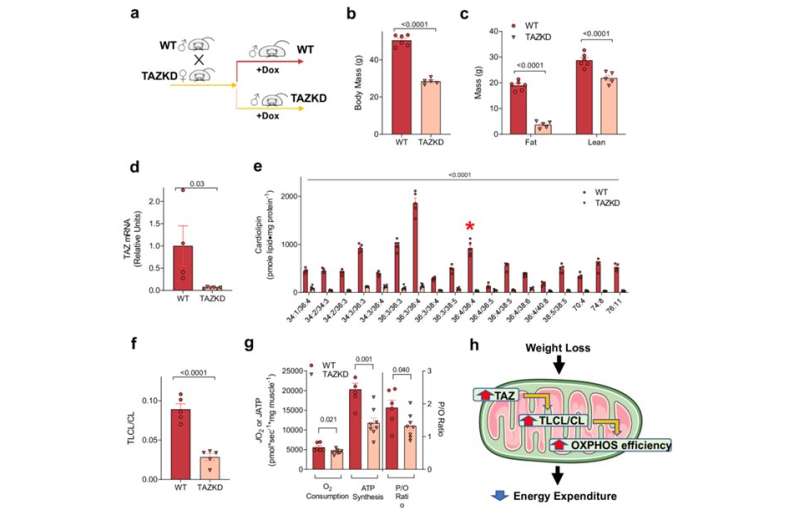This article has been reviewed according to Science X's editorial process and policies. Editors have highlighted the following attributes while ensuring the content's credibility:
fact-checked
proofread
Increasing skeletal muscle mitochondrial efficiency after weight loss as a novel mechanism for lower energy expenditure

Weight regain is a common problem for weight loss individuals. A number of studies have shown that weight loss in overweight people results in a reduction in whole-body energy expenditure.
This reduction in energy expenditure is disproportionate across tissues, known as energetic mismatch which primarily originates from lean tissue, thus increasing weight regain risk. Although this phenomenon has long been identified and has been suggested that weight loss may alter skeletal muscle mitochondrial respiration, the mechanisms are not fully understood and direct evidence is lacking.
In April 2023, Professor Katsuhiko Funai at University of Utah published a study in Life Metabolism entitled "Weight loss increases skeletal muscle mitochondrial energy efficiency in obese mice." Funai and colleagues found that during weight loss in obese mice, the efficiency of skeletal muscle mitochondrial oxidative phosphorylation increased, resulting in a reduction in energy expenditure throughout the body, which in turn contributes to weight loss rebound.
Specifically, obese mice were treated with dietary interventions to lose weight, followed by a combination of high-resolution respirometry and fluorometry measurements. In addition, changes in mitochondrial energy metabolism, mitochondrial proteomes, and mitochondrial lipidomes were examined in weight-loss mice. The results showed that there was no significant change in mitochondrial proteomes or respiratory chain supercomplex formation in skeletal muscle of weight-loss mice, but oxidative phosphorylation efficiency significantly increased.
Finally, by analyzing the lipidome of skeletal muscle in weight-loss mice, the authors found that weight loss accelerated the remodeling of mitochondrial cardiolipin (CL) acyl-chains to increase tetralinoleoyl CL (TLCL) content, a species of lipids thought to be functionally critical for the respiratory enzymes. Further studies showed that knocking down CL acyltransferase tafazzin reduced TLCL levels as well as skeletal muscle oxidative phosphorylation levels, allowing mice to avoid diet-induced weight gain.
Altogether, the evidence suggests that weight loss leads to an increase in skeletal muscle mitochondrial energy production efficiency, thereby reducing energy expenditure throughout the body.
More information: Patrick J Ferrara et al, Weight loss increases skeletal muscle mitochondrial energy efficiency in obese mice, Life Metabolism (2023). DOI: 10.1093/lifemeta/load014




















